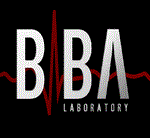Biological Systems Engineering, Department of

Biomedical Imaging and Biosignal Analysis Laboratory
Date of this Version
2009
Document Type
Article
Citation
IEEE Transactions on Ultrasonics, Ferroelectrics, and Frequency Control, vol. 56, no. 12, December 2009, pp. 2624 - 2629.
Abstract
Feature tracking is an algorithm for estimating blood flow velocity and tissue motion using pulse-echo ultrasound. In contrast to cross-correlation speckle-tracking techniques, feature tracking identifies features at discrete locations and corresponds them from frame to frame. Prior studies have demonstrated that feature-tracking estimates exhibit lower variance than those obtained by the conventional autocorrelation method and require less computational complexity than either speckle tracking or autocorrelation. To date, not much attention has been paid to the process by which trackable features (normally local maxima) are selected from the set of all available features. In the selection process, it is desired to minimize flow estimate variance while providing sufficient spatial and temporal coverage of flow area. Flow studies were performed with a blood flow phantom, 3.5-MHz spherically focused transducer, and a pulser/receiver. Values were selected for the amplitude threshold (based on the RMS value) and width thresholds (based on the wavelength corresponding to transducer center frequency). The performance of this method using different threshold values was evaluated by the estimate standard deviation and number of features available to track. Results show that an optimal width threshold occurs at about 40 to 45% of the transmission wavelength, while a trade-off exists between amplitude thresholds and spatial flow field coverage. Both the standard deviation of estimated velocities and number of available features decrease with increasing threshold (either amplitude or width). This affords a user a method of determining optimal feature tracking thresholds depending on the specific flow application. Judicious selection of feature thresholds can decrease the estimate standard deviation by more than 25%.
Included in
Biochemistry, Biophysics, and Structural Biology Commons, Bioinformatics Commons, Health Information Technology Commons, Other Analytical, Diagnostic and Therapeutic Techniques and Equipment Commons, Systems and Integrative Physiology Commons


Comments
Copyright © 2009 IEEE. Used by permission.